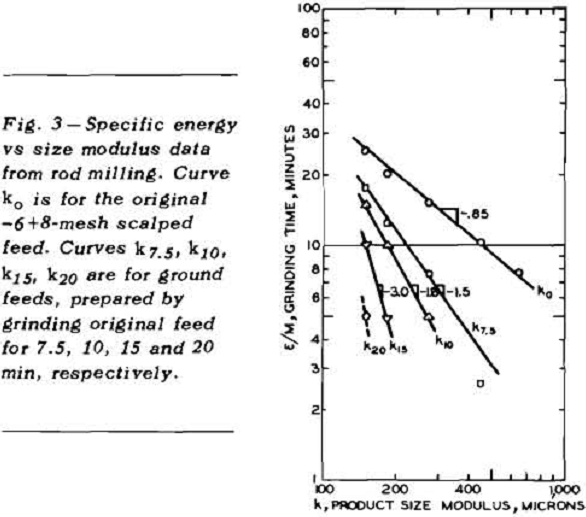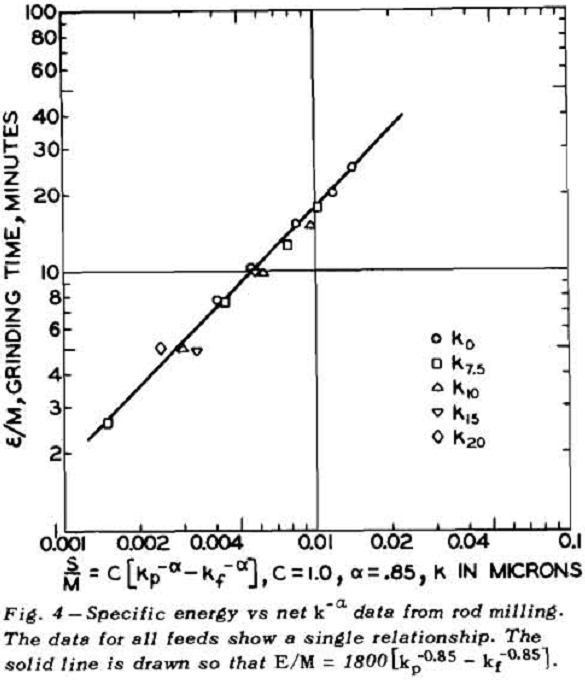The feed size cannot be neglected in any case where the effective size modulus of the feed is not too much coarser than the size modulus of the product. This can be illustrated in the second experiment of Fuerstenau and Cohen where the feed is considered to be the original -6 +8-mesh material. However, one can also consider the product from the 7.5-min grind to be the feed for the 10, 15, 20, 25-min grinds, and the 10-min product to be the feed for the 15, 20, 25-min grinds, etc.
The equation relating specific energy to the size modulus must then be rewritten as

where subscripts p and f refer to the product and feed, respectively, and α refers to the slope of the size distribution curve.
A plot of specific energy vs (kp-ap – kf-af), shows that the curves for each feed size all fall on one line. In the calculations, the value of k-a for the scalped -6 + 8-mesh feed can be neglected. All the lines, one for each feed size whether for the scalped feed or for each of the ground feeds, are superimposed on this figure. If k is given in microns, the E/M intercept of the plotted lines at (kp-a – kf-a) = 1.00 shows that A = 1800.



